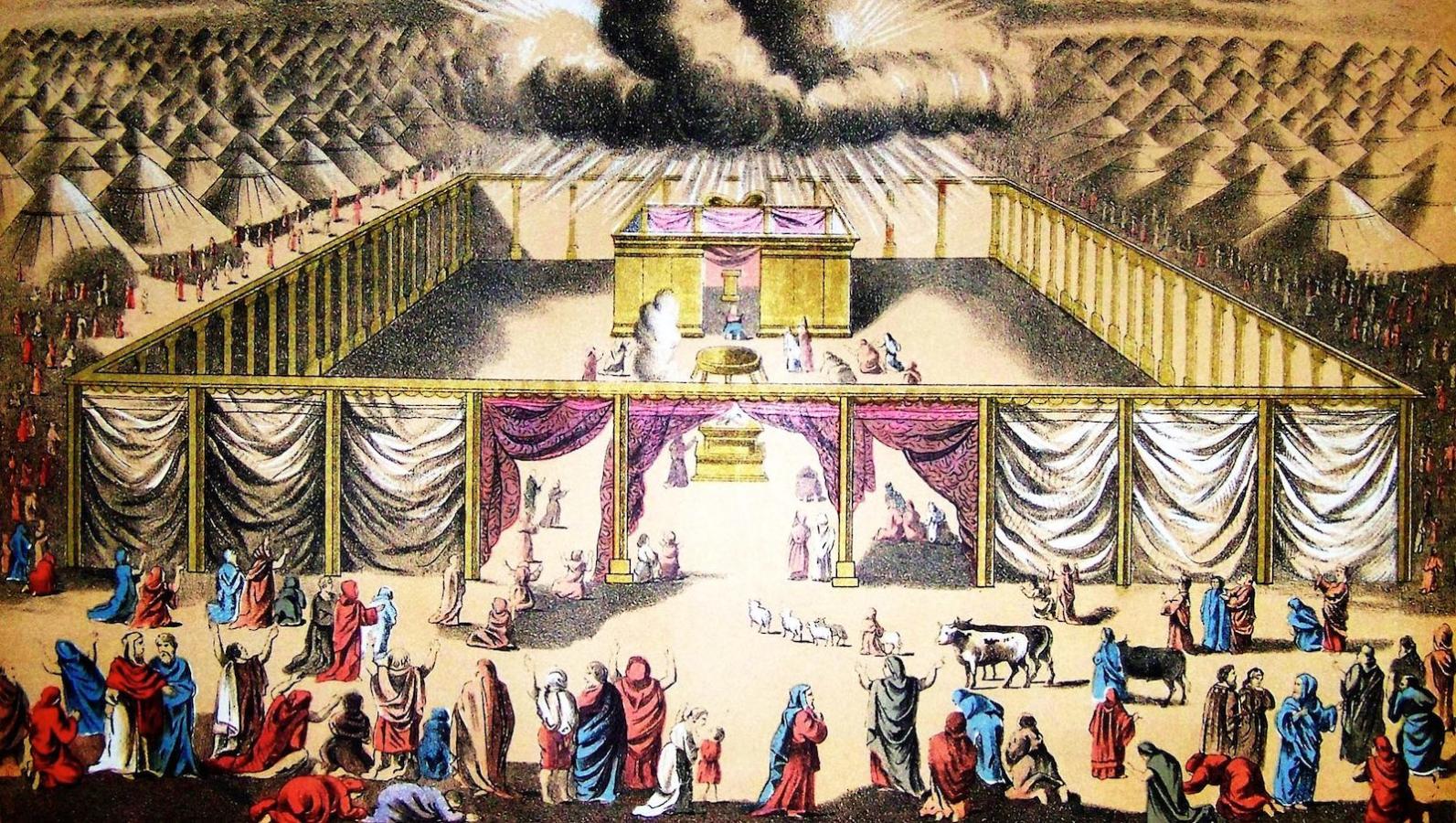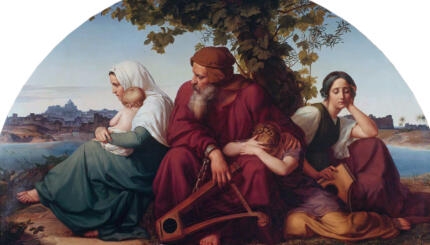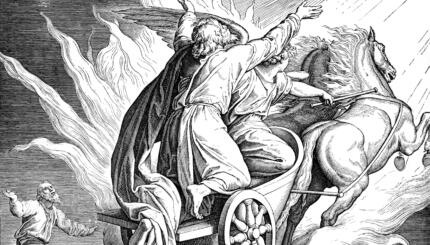Commentary on Parashat Pekudei, Exodus 38:21 - 40:38
For the first time in the Torah, with the completion of the Mishkan, the presence of God has a regular home, an earthly residence. And this home is not only for God; it is a “Tent of Meeting” for Israel as well. When God’s presence enters the Mishkan, it is clear that Israel’s work in building this sacred structure has been blessed. For the first time, by learning from past mistakes, Israel — all Israel — has a place to experience God.
In other words, the same Israelites who once sought to contain power and divinity within the idol of the Golden Calf (Exodus 32) now create the Mishkan (Exodus 35-40), which, while made of the same materials and by some of the very same processes, emphatically does not attempt to contain God. Having been given an explicit opportunity to fall again into the trap of deifying something material, having been handed the opportunity to make a cage for God, the people instead create the Mishkan and regard it only as a space, not as a stand-in or a container for God (Avivah Gottlieb Zornberg,The Particulars of Rapture, 2001, pp. 480-481, 330-333). Once this purpose is established, God’s presence dwells in the Mishkan, in their midst; the process of t’shuvah (repentance) is complete.
Given the prohibitions against making images of God, the disaster of the Golden Calf, and the lesson the Israelites have begun to learn that God cannot be represented physically, we might expect the presence of God in the Mishkan to be without form altogether, invisible. Wouldn’t God’s complete lack of form at this moment make perfect sense in light of the Israelites’ newfound awareness and understanding?
However, God’s presence is manifested in the Mishkan in not one but two different ways: as a cloud by day and fire by night. Why does God come to the Israelites (and to us, as we read) in these very common forms? Wouldn’t the lesson of the Golden Calf be more clearly enforced if now God’s presence remained untainted by any physical form?

Help us keep Jewish knowledge accessible to millions of people around the world.
Your donation to My Jewish Learning fuels endless journeys of Jewish discovery. With your help, My Jewish Learning can continue to provide nonstop opportunities for learning, connection and growth.
God Is Not Abstract
Perhaps these manifestations exist precisely in order to teach the Israelites that an experience of God can exist within the visual and tangible realms. That is, the problem with worshipping the Golden Calf was not that the calf could be seen; it was that the Golden Calf was worshipped as if it contained God entirely, as if God was nowhere else. Here, the Israelites learn that an encounter with God does not have to be so abstract, so removed from their sensory experience that they are left without any means of comprehending or describing it. In other words, the divine experience can include things seen. However, it must also transform our grasp of the seen object, our understanding of God, and, by extension, the act of seeing and the seer.
Remember the narrative of the Burning Bush that was on fire but not consumed (Exodus 3:1-4). This phenomenon is contrary to our understanding of what happens when a bush catches on fire. For Moses, the very existence of the Burning Bush not consumed awakens the possibility that there is something divine in that fire. God could just have easily come to Moses without a Burning Bush; however, this is what enables Moses to find evidence of God’s presence. Before God even addresses Moses, he sees the fire acting differently and realizes that there is more to the world than what he knows.
Later, we read about two pillars that accompany the Israelites as they leave Egypt: a pillar of cloud by day and a pillar of fire by night (Exodus 13:20-22). The cloud is a signpost and the fire an illuminated guide in the darkness; both show Israel the path to follow on their journey through the wilderness. But note that neither object acts naturally. The cloud does not blanket and obscure, as we expect clouds to do; instead, it is contained in a pillar and provides direction for the Israelites. Similarly, the fire does not spread and destroy whatever is in its path, as we expect fire to do; like the cloud, the fire is contained, a giant torch. In both of these manifestations, the Israelites began to see, just as Moses saw in the bush, the possibility of natural things, things of-this-earth, being bent and shaped in unnatural, divine ways.
The Familiar Becomes Unusual
Focusing on our portion (Exodus 40:34-38), God’s presence now dwells in the completed Mishkan, not as something invisible to Israel, but as something very familiar. Just as before, God’s presence is manifested as a cloud by day and fire by night. Here, too, the familiar acts in an unusual way. The cloud remains in the Mishkan; it does not drift or dissipate. Even more remarkably, the fire burns night after night and does not consume anything; each morning, the Mishkan remains intact (Zornberg, p. 492). These manifestations–these miracles–allow Israel to find and perceive God’s presence but still remain aware that their perceptions cannot begin to encompass the totality of that presence.
Had God dwelt invisibly in the Mishkan, had the Israelites never seen God’s presence there, they might have assumed that seeking visual encounters with God is a form of idolatry. By appearing “in the view of all the house of Israel” (40:38), God teaches that the problem with worshipping idols is not the visual experience itself; the problem occurs when the act merely confirms our preconceptions about God (Zornberg, p. 482). The Israelites see God’s presence in natural, familiar forms that then transcend and undermine those forms. This seeing, and this dissonance, tests their understanding of the world and leads to a more complex relationship with God.
So it is for us: We need not be wary of looking for visual evidence of God’s presence in the world around us. Seeking God’s presence with our eyes is not idolatrous; it is only idolatry when we “know” in advance what we will see, when our expectations restrain us. Unfortunately, we may have been so afraid of making idols that we have limited ourselves to divine experiences that are abstract and often detached, expecting ourselves to develop a relationship with God without using our eyes. What would happen if we started looking for God’s presence in fire and clouds once more? How much do our relationships with God stand to gain from our actually seeing what may have been there all along? At the very least, we will benefit from the search alone, from our looking day and night. And at best, it is possible that if we look, we will see. And then, we will never see the same way again, for we ourselves will have changed.
Reprinted with permission from The Torah: A Women’s Commentary, edited by Tamara Cohn Eskenazi and Andrea L. Weiss (New York: URJ Press and Women of Reform Judaism, 2008).
parsha
Pronounced: PAR-sha or par-SHAH, Origin: Hebrew, portion, usually referring to the weekly Torah portion.

Help us keep Jewish knowledge accessible to millions of people around the world.
Your donation to My Jewish Learning fuels endless journeys of Jewish discovery. With your help, My Jewish Learning can continue to provide nonstop opportunities for learning, connection and growth.



